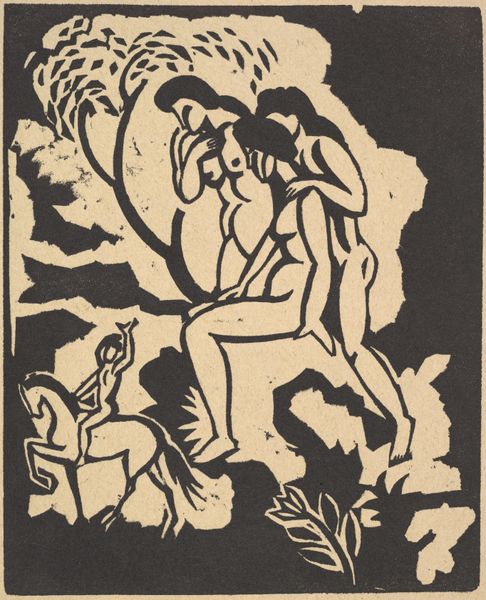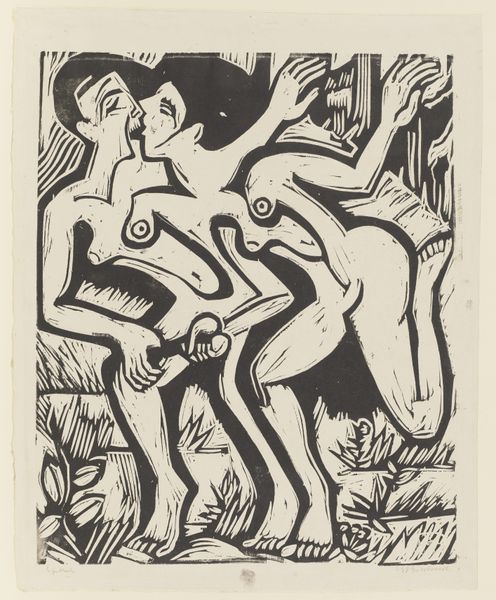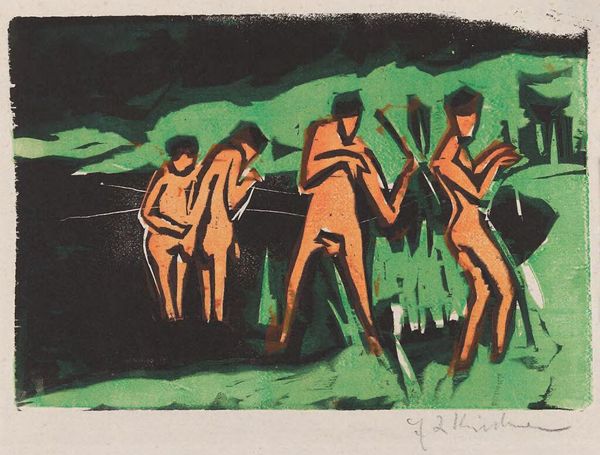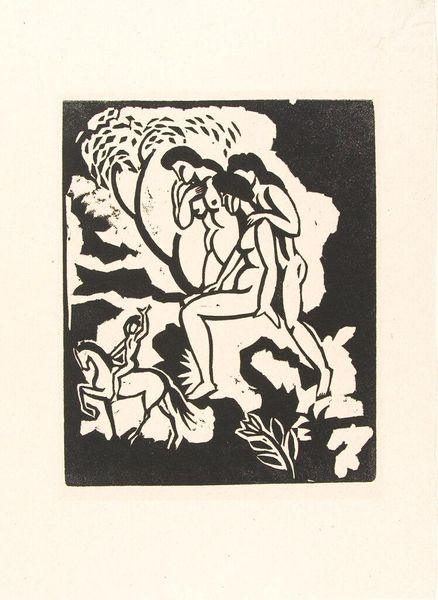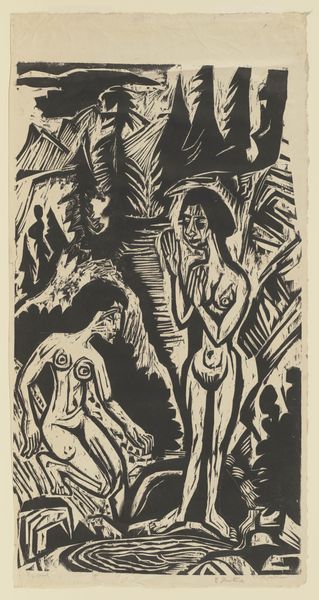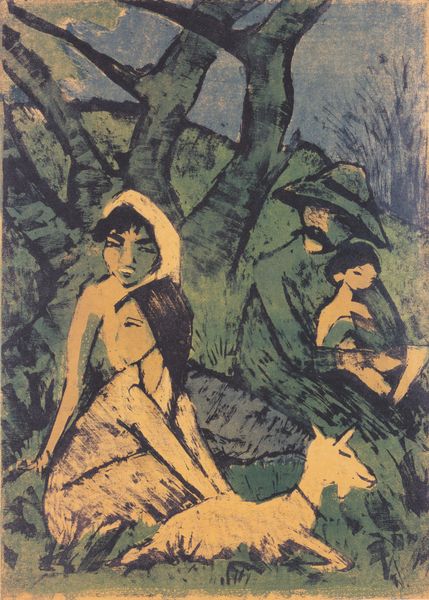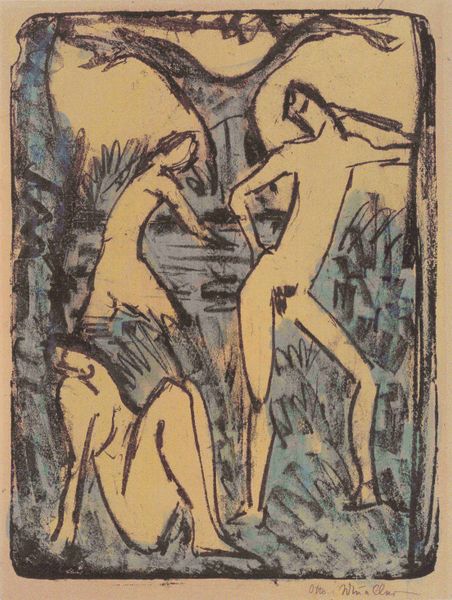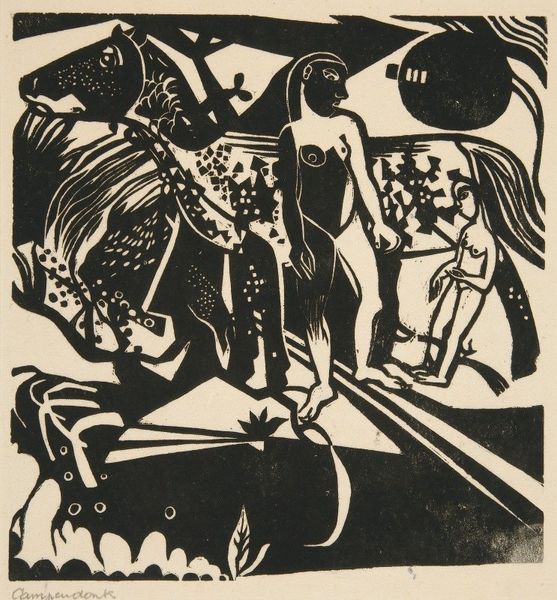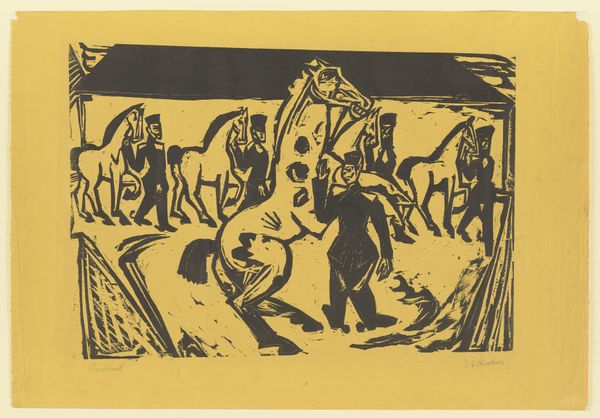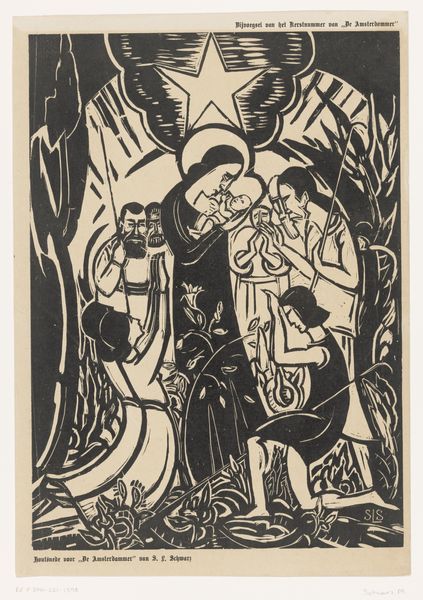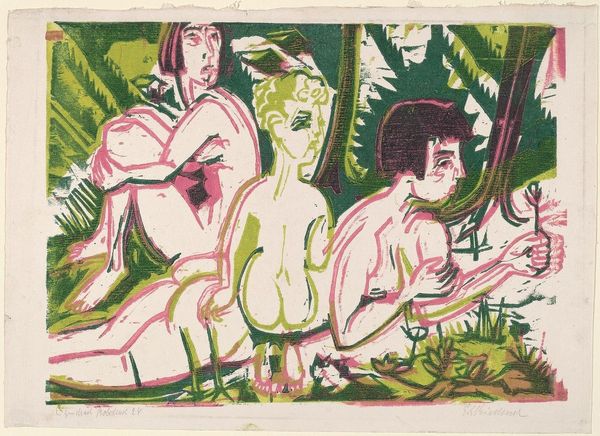
print, linocut
#
ink painting
#
linocut
# print
#
linocut
#
landscape
#
german-expressionism
#
figuration
#
linocut print
#
expressionism
#
abstraction
Copyright: Public domain US
Curator: This striking linocut, "Killing of the Banquet Roast," was created by Max Pechstein in 1912, during his involvement with the German Expressionist group Die Brücke. Editor: It’s… intense. The raw energy of the colors – that bright red against the sharp yellow – and the coarse carving gives it a primal feel. A sense of untamed freedom almost. Curator: Exactly! Pechstein and the other Brücke artists were interested in exploring primal emotions and sexuality, often looking outside of Western academic traditions for inspiration. There was a significant focus on rejecting traditional artistic values, driven by broader social and political unease at the time. Editor: You can definitely see the rejection of tradition in the angularity of the figures and the simplification of form. The tree, for example, is reduced to these broad, almost geometric planes of green. And the color, too, right? Far from representational. Curator: Right, that’s Expressionism in action! These choices emphasize the emotional impact over realistic representation, so the non-naturalistic colours could emphasize the drama and unrest that simmered beneath the surface of German society during the period. Editor: And there’s a deliberate primitivism at play here as well. The almost crude cutting technique and subject matter – the ambiguous activity with those seated female figures and one possibly hunting in a stylized landscape. There’s a reaching back to some pre-industrial ideal. Curator: Precisely, Pechstein was quite engaged with indigenous art forms; such references tie in with contemporary debates around cultural identity, colonization, and the construction of the so-called ‘primitive’ within European society at the time. Artists frequently grapple with authenticity, and exoticism— navigating their position in a globalized art world while critiquing imperialism and cultural appropriation. Editor: The dynamics in terms of line and shape really energizes it. Now thinking about this work, what intrigues me most is its bold defiance of convention. Curator: Absolutely, and considering the artistic climate of early 20th-century Germany makes this piece all the more resonant. Editor: Indeed, a compelling intersection of form and context that speaks volumes.
Comments
No comments
Be the first to comment and join the conversation on the ultimate creative platform.
